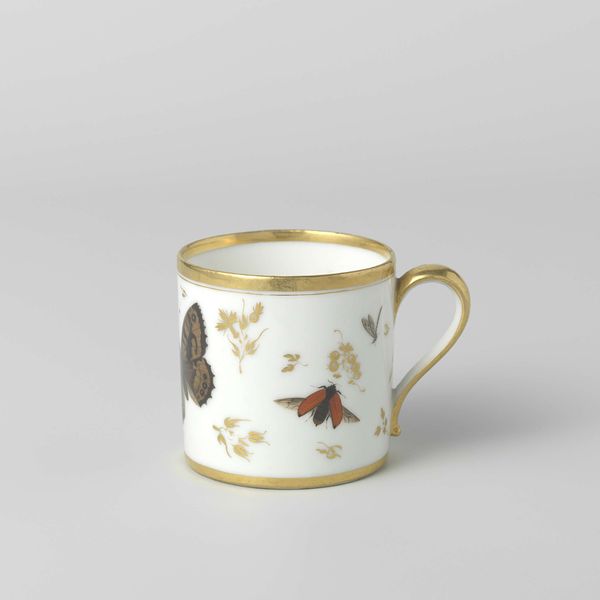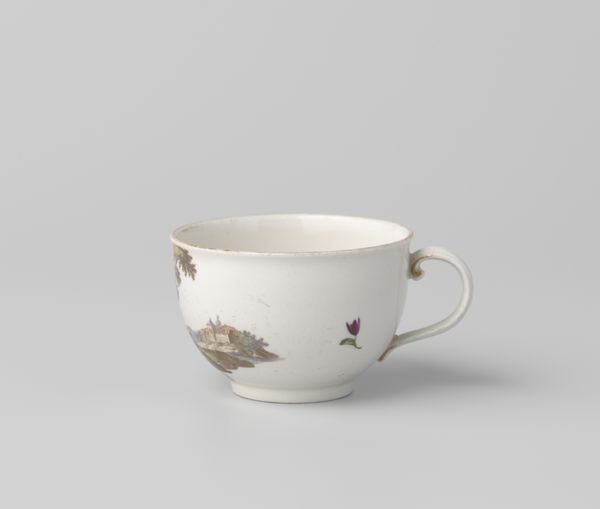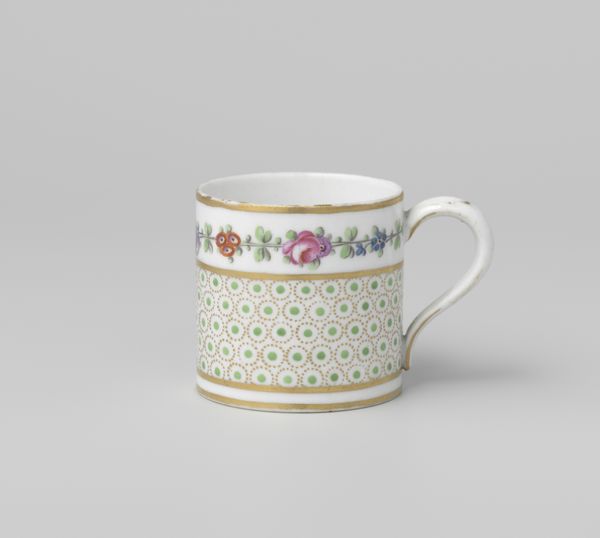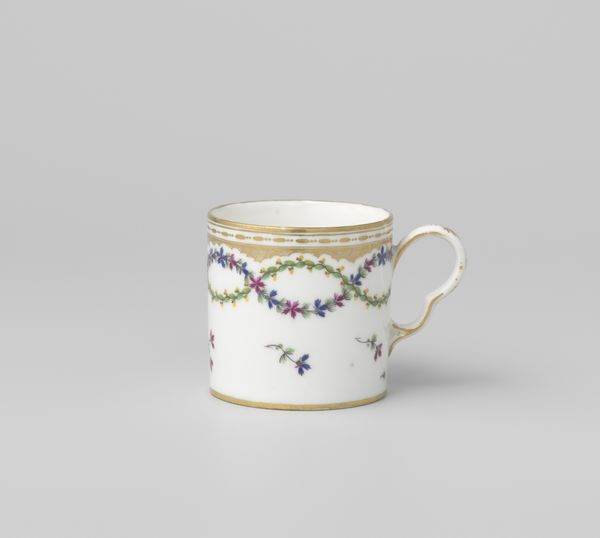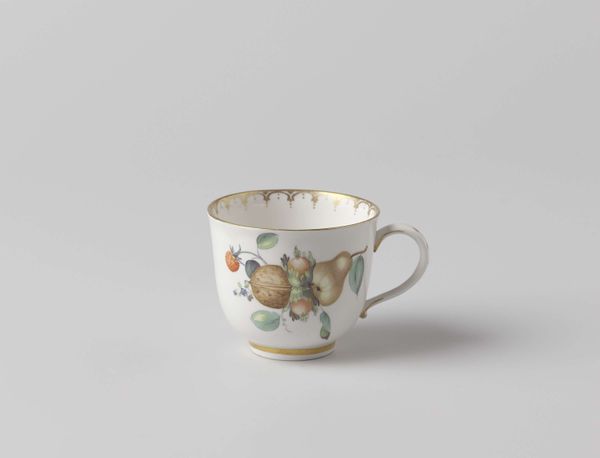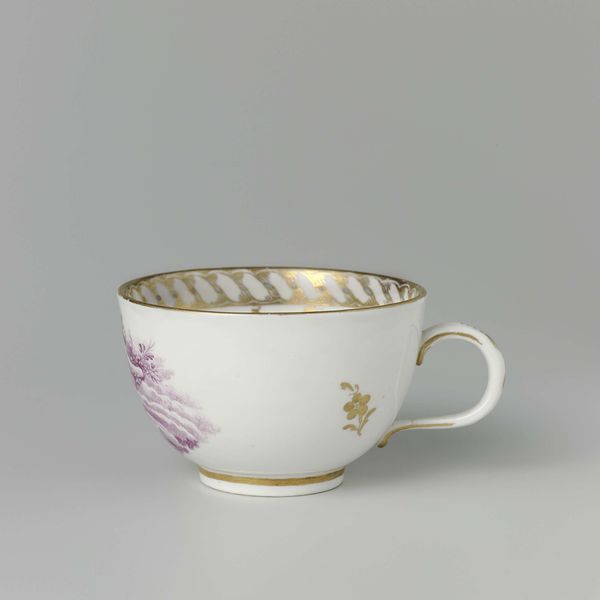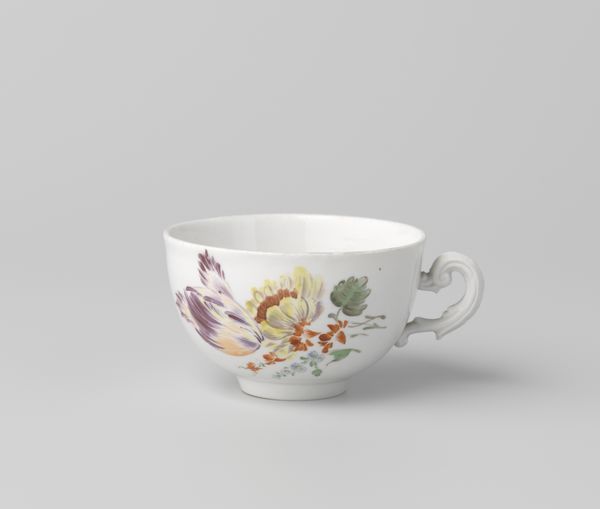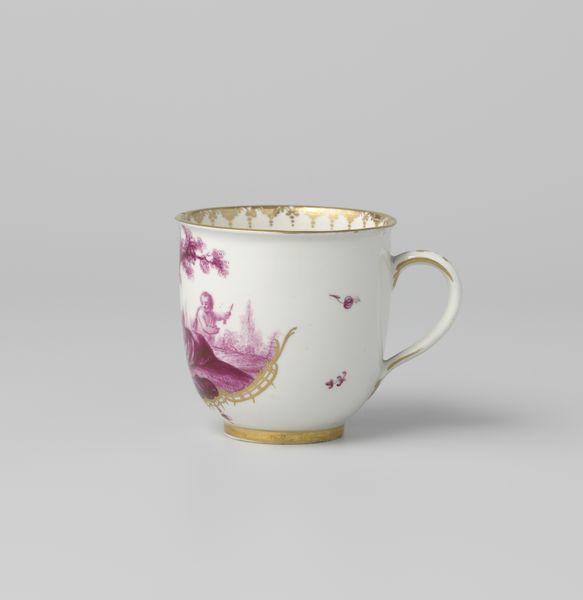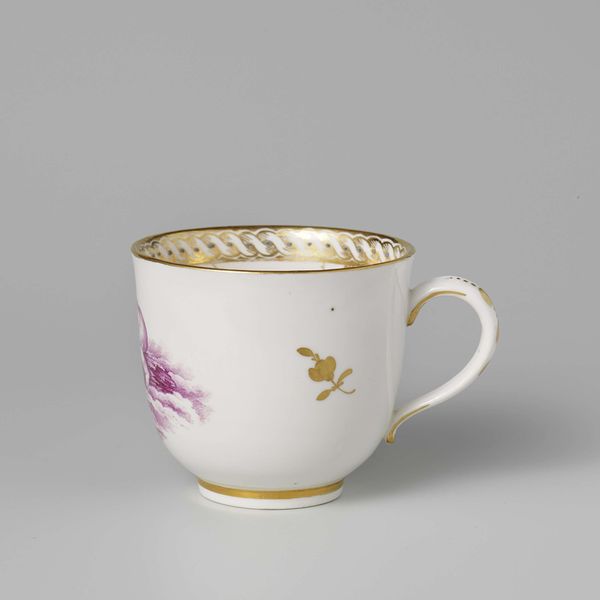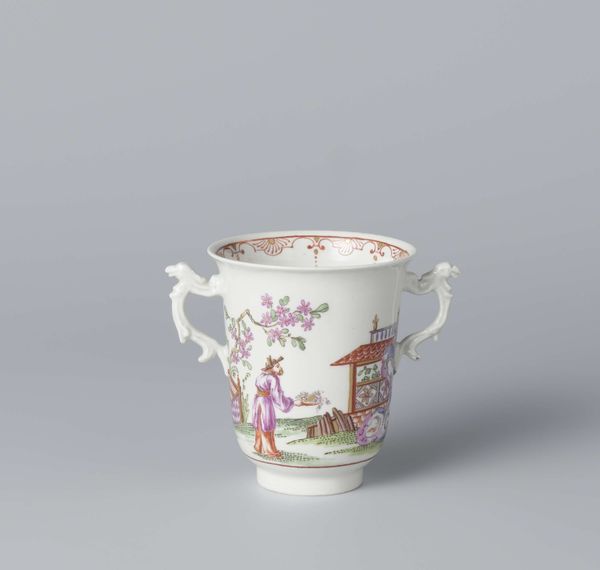
Dimensions: height 6.4 cm, diameter 6 cm, width 8.7 cm
Copyright: Rijks Museum: Open Domain
Curator: What immediately strikes me about this piece is its curious duality. Delicate porcelain, gilded edges, but then...insects? Editor: Precisely. What we have here is a porcelain cup from around 1797-98, currently held in the Rijksmuseum. The cup, identified as a product of the Rue Thiroux factory in Paris, features meticulously painted insects, flower sprays, and grapevines. Curator: In what sense are insects symbolic at the time? Is it as straightforward as a celebration of the natural world? Editor: Well, think about the context. The Rococo style was in vogue – characterized by its elegance and opulent natural motifs. Here, these elements are subverted with what many would consider unsettling depictions of spiders or caterpillars. On the one hand, one can view it as symbolizing the vanitas movement and memento mori. The spider may even signify mortality and ephemerality and that death and decay occur regardless of material or financial wealth. Curator: And materially, the porcelain is critical here, its smooth, luminous surface becomes a field upon which these symbols are rendered. The use of a pristine white ground and golden detailing also enhances the textural quality. Does it add or detract from its presumed use? Editor: Arguably both. Such detailing, like the cup's size, indicates use, but a spider? Not particularly appetizing with your morning tea! Consider also that the juxtaposition might aim to provoke thought: Beauty and revulsion coexisting on a mundane object. A complex visual paradox is introduced, no? Curator: Precisely! And that interplay makes it much more than a simple decorative piece. It prompts reflection and shows us that aesthetic enjoyment lies even in our repulsion and that even everyday moments in our own mortality. Editor: Yes. In short, such cultural tension makes it such an intriguing relic of its time.
Comments
No comments
Be the first to comment and join the conversation on the ultimate creative platform.


